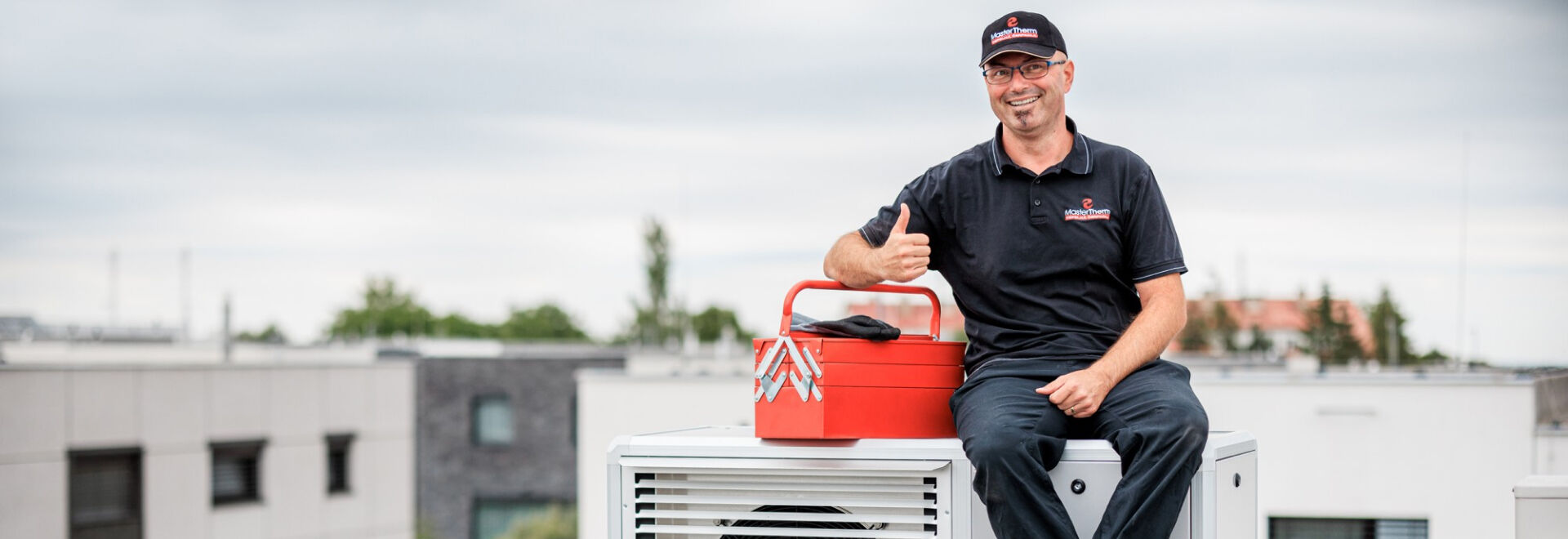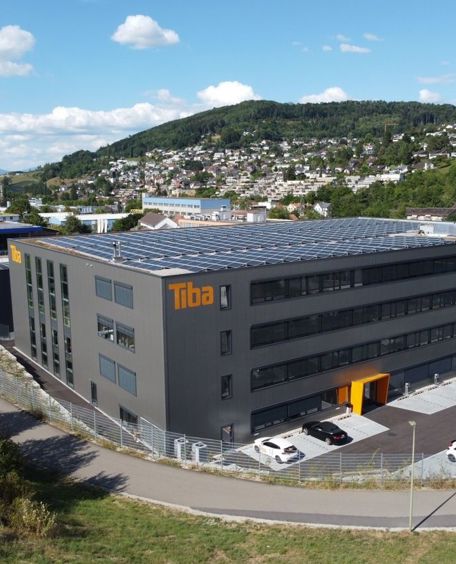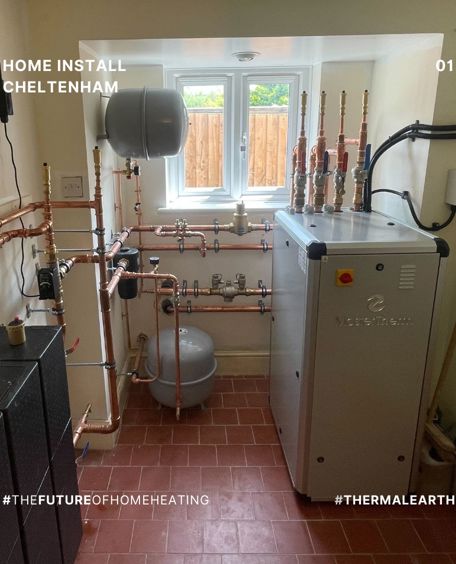How to take care of heating with a heat pump and what does the heat consumption in the heating season look like? When does the heating season actually start and end? More in the article below.
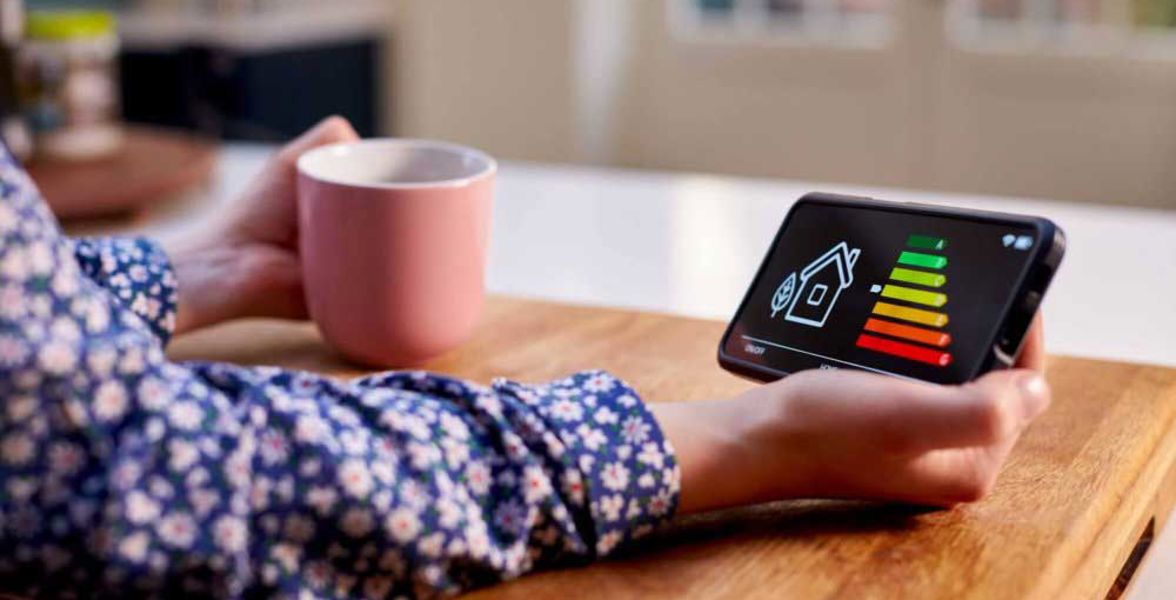
How to take care of heating with a heat pump and what does the heat consumption in the heating season look like? When does the heating season actually start and end? More in the article below.
Is your heating pump-based? What about heating consumption during the heating season?
With energy prices rising significantly, we are becoming increasingly interested in the details of heating our homes, how to go about it innovatively, and how to save on costs. The following article focuses on the generally little-known information about the impact of the heating season on heat consumption.
The number of heating days in the heating season varies from year to year, as does the average outdoor temperature
The heating season in Central Europe usually starts on 1 September and ends on 31 May. The number of heating days in the Czech Republic over the past 20 years has ranged from 200 up to 250, with an average of around 220 days, and in recent years more around 210 days. The number of heating days in itself does not tell us anything about the amount of heat needed for heating.
The average outdoor temperature during the heating season varies depending on how cold the season is. Statistically, over the last 20 years, average temperatures in the heating season have been around 4-5°C.
The data given refers to the climate in the most densely populated locations. The combination of the number of heating days and their average temperature best characterises the intensity of heating energy consumption and is given in terms of “day-rates”. If we evaluate the past 20-year period in terms of day-rates, the heating seasons differ from each other in their heat demand by up to 30 %, i.e. quite significantly.
The influence of the distribution of outdoor temperatures is key to the heat usage pattern
Many people are convinced that they consume the most heat in the heating season at the lowest outdoor temperatures. In extreme cold, buildings require the greatest heat supply, but the occurrence of severe cold in the heating season is so rare that the proportion of total heat consumption is relatively small. Surprisingly, for example, at temperatures of -10 °C and below, less than 1% of annual heat consumption is used for heating. This is because for many years now such low temperatures have not occurred in the Czech Republic at all, and if then only for a few hours.
On the other hand, during the very long transition period at the beginning and end of the heating season, temperatures are above 9-10 °C. However, even these outdoor temperatures are unimportant for heating consumption — at temperatures above 10°C, consumption is only less than 5 % of the annual value. The reason is that at such high outdoor temperatures, the heat consumption in buildings is minimal.
The fact is that most of the annual heating consumption takes place at outdoor temperatures between -1 °C and +4 °C, accounting for a full 40% of the heat used for heating. The centre of gravity of heat consumption is at +2 °C, when almost 9% of the annual heat is consumed. The following graph shows the heat consumption as a function of the outside temperature:
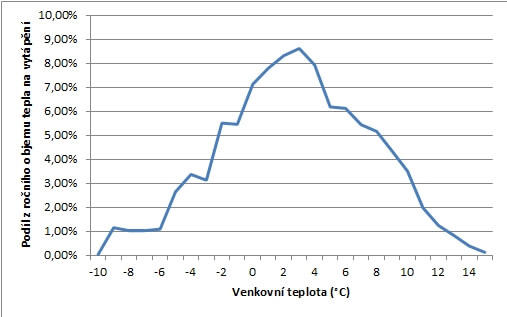
Most important for efficient heating are temperatures slightly above zero
When evaluating a heat source in terms of efficiency, it is therefore clear that the most important outdoor temperature range for which we evaluate efficiency is between about -2°C and + 8°C, where almost 75 % of the total heat consumption takes place. What are the implications of this for heat-pump heating?
- Those referring to the reduced efficiency of an air-source heat pump at -15°C do not understand the issue. The significance of efficiency at -15°C on year-round energy consumption is completely negligible. Similarly off the mark are those highlighting the high efficiency of heating at temperatures above 10°C.
- The most important temperature point for evaluating the efficiency of a heat source is +2°C, which is why manufacturers evaluate air pumps at A2W35 conditions (air at 2°C, water at 35°C). The COP value at +2 °C has the greatest impact on the energy cost savings during heating season.
- For an air-source heat pump, it makes no sense to measure the electricity consumption at very low temperatures: this will always seem very high, given the combined effect of the building’s high heat consumption and the relatively low efficiency of the heat pump. In contrast, during the higher temperatures of the heating season, the heat pump will operate very efficiently and only a year-long evaluation will show an objective result.
